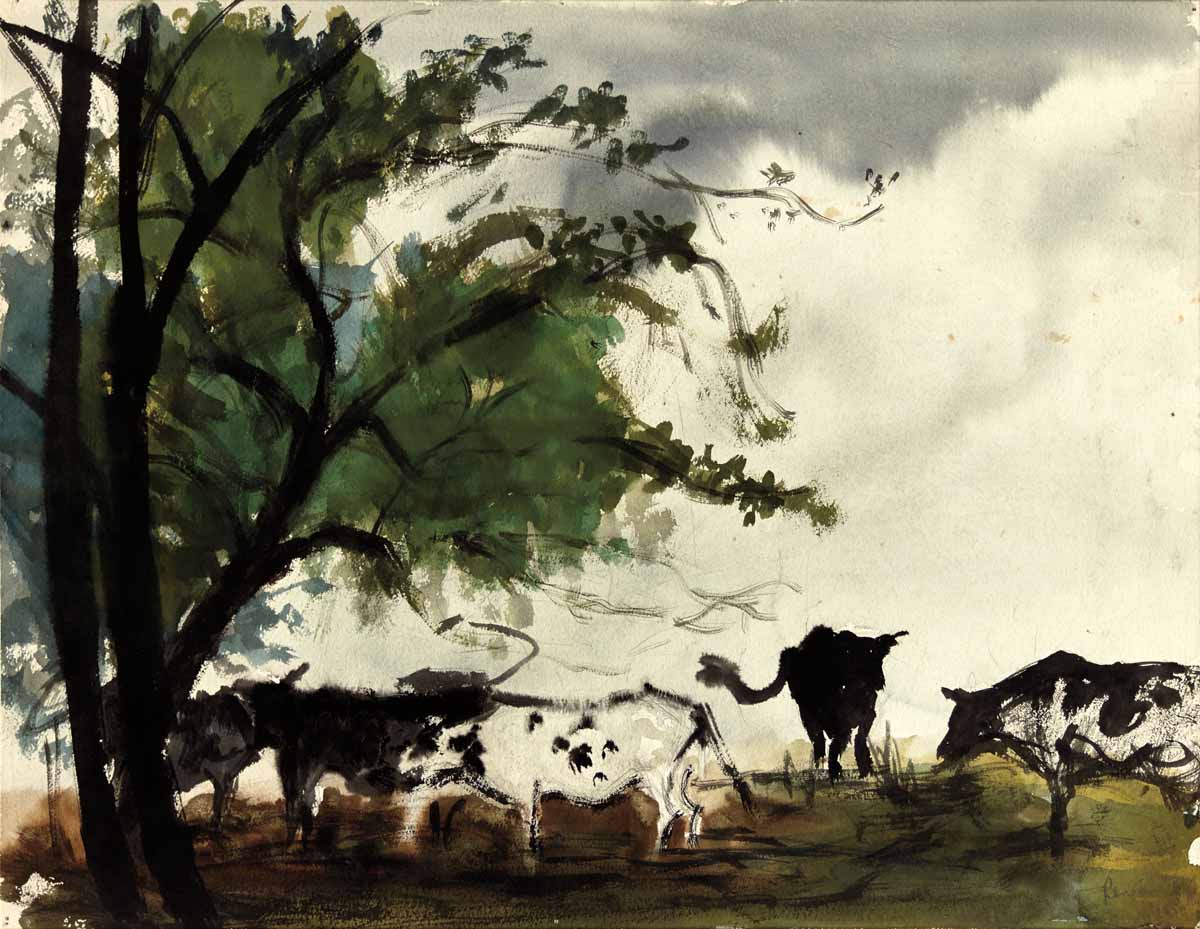Watercolor Training
A precocious draftsman, Renee Kaupiz’s early paintings at Cass Technical High School and then at Detroit Society of Arts & Crafts, were primarily watercolor. She was a young sensation among regional watercolor artists and consistently won painting prizes including first prizes at Detroit’s Scarab Club, the Michigan Watercolor Society and the National Religious Art Exhibition.
Early watercolors were often still life, models posing in art school, and interpretations of famous art at the local Detroit Institute of Arts. Sometimes she ventured into Detroit neighborhoods to paint alleys and streets, such as Watson Street near the old Arts & Crafts building address. When not in school, for spending money, the enterprising teenager painted mannequins at a local department store and even faces at the Michigan State Fair.
In her later teens, Renee travelled in the Midwest and Canada and had her first exposure to country en plein air painting. On one field trip, she ventured to Quebec where seaside docks and marine structures inspired a series of Canadian watercolor paintings.
Art Shows
Always resourceful with a certain marketing savvy, she approached local artist markets for her first group and then solo exhibitions. Soon she was regularly invited to group exhibitions and competitions on the state and regional levels. In fact, at least a dozen early group art shows were watercolor for the enterprising young lady.
It was during this time that Renee Kaupiz attracted the attention of Edgar P. Richardson, Director of the Detroit Institute of Arts. Dr. Richardson, future co-founder of the Archives of American Art, insured regular access for her art to the DIA’s group exhibition programs, purchased one of her paintings for the museum, and later contributed a catalog forward for her first oil painting art show.
Move to Suburban Detroit
Upon graduation from Arts & Crafts, Renee Kaupiz married fellow art student and sculptor Lloyd Radell. The young couple soon moved to suburban Michigan where Renee continued her prolific studio art commitment, even while giving birth and beginning a large family. The family refrigerator seconded as an artist easel and nursery and bedroom walls received near fresco adornment with the artist’s watercolor brushes.
The popularity of Renee Radell watercolors attracted local art gallery attention. The first three solo art shows in the Midwest were her watercolor paintings. The Detroit News and Detroit Free Press heralded the success of this indigenous talent.
Collections
Watercolor paintings by Renee Radell have been acquired by the Detroit Institute of Arts, The Dearborn Museum, the Walter P. Chrysler Museum and the Minoru Yamasaki collection, among many other private art collections in the United States and Europe.



“Her art today is not a charming and “artistic” one; it is one of passion and power, which one looks at carefully and with the most serious attention.”
_









